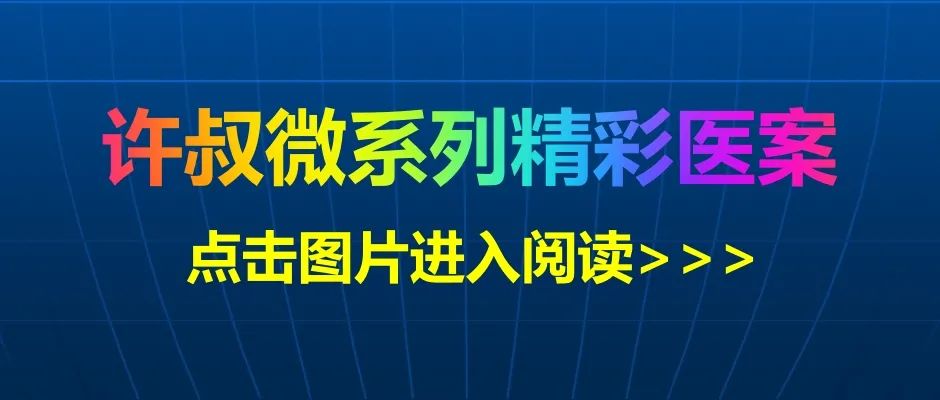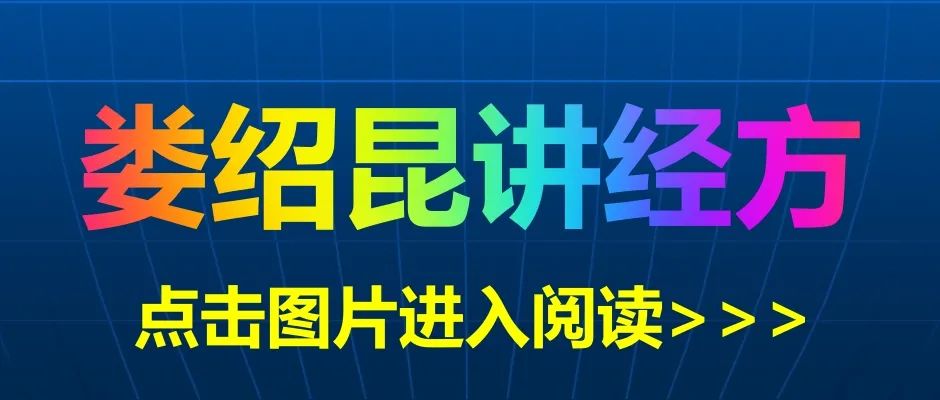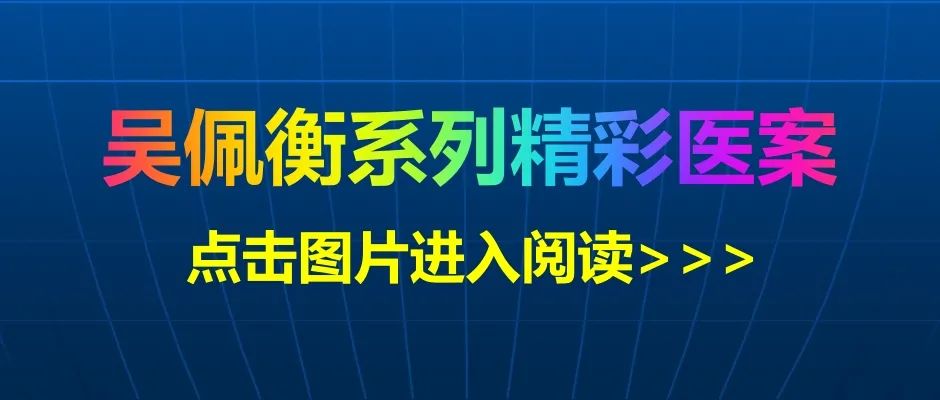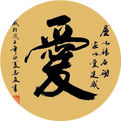Treatment of Lower Jiao Damp-Heat Syndrome (Part 1)
Continuing from the previous issue: Treatment of Middle Jiao Damp-Heat Syndrome (Part 3)
1. Characteristics of the SyndromeThe Lower Jiao Damp-Heat syndrome can arise through two pathways: either due to damp-heat evil directly invading the Lower Jiao, or from unresolved Middle Jiao damp-heat transmitting downward.The affected areas are primarily the bladder and the small and large intestines, manifesting as disturbances in water metabolism and abnormal transformation of food.Although the Lower Jiao Damp-Heat syndrome can be categorized into two types—dampness heavier than heat and heat heavier than dampness—it is primarily characterized by difficulty in urination or unsatisfactory urination. Additionally,while the bladder and the small and large intestines are the main affected areas, it can also impact the Middle and Upper Jiao, leading to symptoms in the spleen, stomach, heart, and lungs, caused by the pervasiveness of damp-heat evil.2. Treatment PrinciplesTo treat the Lower Jiao Damp-Heat syndrome, the focus should be on the bladder and the small and large intestines, employing appropriate methods targeting the affected areas.For bladder damp-heat syndrome,the main manifestation is difficulty in urination, and treatment should aim to facilitate urination. If dampness is heavier than heat, one should select light diuretic herbs to promote the downward drainage of dampness, thus expelling heat; if heat is heavier than dampness, one should choose bitter-cold clearing herbs to guide damp-heat out through urination.For large intestine damp-heat syndrome,the main manifestation is constipation or unsatisfactory bowel movements, and treatment should aim to guide stagnation and unblock the bowels. If dampness is heavier than heat, it is advisable to use warm aromatic herbs in combination with spleen-strengthening and damp-dispelling herbs to clear dampness and facilitate the large intestine; if heat is heavier than dampness, it is advisable to use bitter-cold purgative herbs in combination with qi-regulating and guiding herbs to eliminate large intestine damp-heat.In summary, to treat the Lower Jiao Damp-Heat syndrome, one should use herbs that promote yang and dispel dampness, allowing the heavy and turbid damp evil to be expelled from the yang.Damp-heat in the Lower Jiao often easily spreads to the Middle and Upper Jiao; therefore, during treatment, it is advisable to appropriately combine herbs that dry dampness, strengthen the spleen, and aromatically transform dampness to eliminate the evil that pervades the three Jiao.3. Differentiation and Treatment1) Dampness Heavier than Heat1) Dampness obstructing the bladder【Clinical Manifestations】Difficulty in urination, head distension due to heat, heaviness and pain in the body, clouded consciousness, nausea and lack of appetite, dry mouth without desire to drink, white greasy tongue coating, and a slippery pulse.【Pathophysiological Analysis】This syndrome is characterized by dampness heavier than heat, obstructing the bladder, leading to an inability to urinate, and also spreading to the Middle and Upper Jiao. Damp-heat obstructs the bladder, causing blockage of the water pathways, hence the difficulty in urination. Since this syndrome is characterized by dampness heavier than heat, the damp evil obstructs the lower orifices, which may lead to a complete inability to urinate, without the burning pain typically associated with heat-heavy conditions.Damp-heat in the Lower Jiao can spread to the Middle and Upper Jiao, leading to symptoms in those areas.Heat trapped in dampness causes the patient to feel a steamy heat sensation. Damp-heat obscures the clear orifices, resulting in dizziness and a feeling of heaviness. Damp-heat obscuring the heart’s protective layer leads to clouded consciousness, with intermittent clarity and confusion, resembling stupor. Damp-heat obstruction prevents the smooth flow of qi and blood at the surface, resulting in heaviness and pain in the body. The spleen and stomach’s ability to ascend and descend is impaired, leading to nausea and lack of appetite. Dampness obstructs the qi mechanism, preventing fluids from ascending, hence the dry mouth, yet dampness remains inside, so the patient does not desire to drink. The white greasy tongue coating and slippery pulse indicate the presence of dampness and turbidity within. The tongue is greasy but not yellow, and the pulse is slippery but not rapid, indicating that the syndrome is characterized by dampness heavier than heat.【Treatment Method】Light diuretic herbs and aromatic herbs to open the orifices【Formulas】 Fu Ling Pi Decoctionto be taken withSu He Xiang WanorZhi Bao DanFu Ling Pi Decoction(from “Differentiation of Warm Diseases”)Fu Ling Pi 15g, Sheng Yi Ren 15g, Zhu Ling 10g, Da Fu Pi 10g, Bai Tong Cao 10g, Dan Zhu Ye 6gBoil in 8 cups of water until 3 cups remain, to be taken in three doses.Su He Xiang Wan(see previous section on “Damp-Heat Causing Phlegm, Obscuring the Heart’s Protective Layer”)Zhi Bao Dan(see previous section on “Heat Invading the Heart’s Protective Layer”)【Formula Discussion】This syndrome is characterized by dampness heavier than heat, obstructing the bladder and causing difficulty in urination, hence the use ofFu Ling Pi Decoctionto lightly drain dampness and facilitate urination. Since damp-heat obscures the heart’s protective layer,Su He Xiang WanorZhi Bao Danare used to aromatically open the orifices.Fu Ling Pi DecoctioncontainsFu Ling PiandZhu Lingwhich lightly drain dampness.Sheng Yi Ren, Bai Tong Cao, and Dan Zhu Yedrain dampness while also clearing heat, guiding damp-heat out through urination.Sheng Yi Renalso has the function of strengthening the spleen.Da Fu Piregulates qi and dries dampness, promoting the smooth flow of qi, making it easier to expel water dampness. The combination of these herbs works together to drain dampness, clear heat, and promote the smooth flow of qi, allowing yang qi to circulate and the water pathways to be regulated, thus facilitating urination.Damp-heat obscuring the heart’s protective layer cannot be resolved solely byFu Ling Pi Decoction, and aromatic herbs should be added to open the orifices and transform dampness. Su He Xiang Wanis a warm aromatic formula suitable for cases where dampness is heavier and heat is not prominent. If damp-heat is equally weighted, Su He Xiang Wan should not be used, and instead, the cooler and aromatic Zhi Bao Dan is preferred. If dampness is heavier than heat, then Zhi Bao Dan should also be avoided to prevent the cold from trapping damp turbidity. Clinically, it is important to assess the condition and select appropriately to achieve efficacy.【Literature Excerpt】“Inhaling foul dampness, pervading the three Jiao, causing head distension due to heat, body pain, nausea and vomiting, difficulty in urination, clouded consciousness, white tongue, little thirst, first use aromatic herbs to open the spirit and clear the orifices,An Gong Niu Huang Wan; then use light diuretic herbs to disperse the turbid dampness,Fu Ling Pi Decoction.”(from “Differentiation of Warm Diseases, Middle Jiao Chapter, Article 56″)【Notes】The key symptom of this syndrome is “difficulty in urination.”Wu Ju Tong included it in the Middle Jiao chapter because, as he stated in this section, “This syndrome involves the exterior and interior, meridians, organs, and the three Jiao, all troubled by damp-heat,” placing the focus of the damp-heat changes in the three Jiao on the Middle Jiao spleen and stomach, thus categorizing it under Middle Jiao syndromes. However, based on clinical observations and the pathophysiology and treatment methods, we believe it should be classified as a Lower Jiao syndrome characterized by dampness heavier than heat.Regarding the treatment of this syndrome, Wu stated in this section, “This syndrome involves the exterior and interior, meridians, organs, and the three Jiao, all troubled by damp-heat, and is most fearful of internal closure and external collapse, hence the urgent use ofNiu Huang Wanto open the orifices, clear heat, and protect the spirit; however,Niu Huang Wancannot drain dampness and disperse turbidities, hence the subsequent use ofFu Ling Pi Decoction.” This syndrome is characterized by dampness heavier than heat, obstructing the Lower Jiao bladder and obscuring the heart’s protective layer, thus treatment should focus on both draining dampness and promoting urination, as well as opening the orifices and awakening the spirit. Based on our clinical experience:diuretic and orifice-opening herbs do not need to be taken in sequence, but can be taken simultaneously for better results.Additionally, this syndrome presents with a “white tongue,” indicating dampness heavier than heat,An Gong Niu Huang Wanis a cold formula that can easily trap damp evils, hence it is not suitable; instead, Su He Xiang Wan or Zhi Bao Dan are preferred.2) Dampness Stagnating in the Large Intestine【Clinical Manifestations】Lower abdominal distension and hardness, constipation, dizziness and a feeling of heaviness, clouded consciousness, epigastric fullness and nausea, greasy tongue coating, and a slippery pulse.【Pathophysiological Analysis】This syndrome is characterized by dampness heavier than heat, obstructing the Lower Jiao large intestine, and also spreading to the Middle and Upper Jiao. Damp-heat obstructs the large intestine, causing qi blockage and preventing the flow of bowel qi, hence the lower abdominal distension and hardness, and constipation. However, this syndrome is characterized by dampness heavier than heat, and the stool is not dry and hard, hence although the lower abdomen is hard and full, it is not painful upon palpation, and there are no afternoon tidal fevers, thirst for cold drinks, dry tongue coating, or a deep and solid pulse, which distinguishes it from heat-constipation conditions. Damp-heat rising can obscure the clear orifices, leading to dizziness and a feeling of heaviness. Damp-heat obscuring the heart’s protective layer leads to clouded consciousness. Damp-heat obstructing the middle can impair the spleen and stomach’s ability to ascend and descend, causing epigastric fullness and nausea. The greasy tongue coating and slippery pulse indicate the presence of dampness and turbidity within.【Treatment Method】Guide the turbid and unblock the stagnation【Formulas】Xuan Qing Dao Zhuo Decoction (from “Differentiation of Warm Diseases”)Zhu Ling 15g, Fu Ling 15g, Han Shui Shi 18g, Wan Can Sha 12g, Zao Jiao Zi (peeled) 10gBoil in 5 cups of water until 2 cups remain, to be taken in two doses, aiming for smooth bowel movements.【Formula Discussion】The constipation in this syndrome is due to damp obstructing the qi, hence the treatment uses methods to transform dampness, move qi, and guide the turbid to unblock stagnation, while avoiding the use of bitter-cold purgatives to prevent damage to the spleen yang, which could lead to diarrhea.In the formula,Wan Can Shais sweet and spicy, entering the large intestine channel, transforming dampness and clearing qi.Zao Jiao Ziis spicy and warm, its nature is to disperse, having the effect of drying dampness and unblocking qi, facilitating the flow of the orifices.The combination of these two herbs transforms dampness, clears qi, and promotes the flow of qi, allowing the bowel qi to pass smoothly, thus the formula is named “Xuan Qing Dao Zhuo Decoction.”Fu Lingstrengthens the spleen and drains dampness,Zhu Linglightly drains dampness, and the two herbs work together to drain dampness through urination, allowing the large intestine’s dampness and turbidity to be resolved.Han Shui Shiclears heat from the Lower Jiao. The combination of these herbs works together to clear and guide the turbid, unblock the bowels, and drain damp-heat.【Literature Excerpt】“Dampness and heat lingering for a long time, pervading the three Jiao, causing clouded consciousness and obstruction of the orifices, lower abdominal hardness and fullness, and constipation, Xuan Qing Dao Zhuo Decoction is the main treatment.”(from “Differentiation of Warm Diseases, Lower Jiao Chapter, Article 55″)【Notes】The key symptoms of this syndrome are “lower abdominal hardness and fullness, and constipation.” The “clouded consciousness and obstruction of the orifices” is due to the large intestine damp-heat obscuring the heart’s protective layer, henceXuan Qing Dao Zhuo Decoctionis used to unblock the bowels, allowing the turbid qi to descend, and resolving damp-heat externally, thus the heart orifices can open. Additionally, Zao Jiao Zi has the function of unblocking the orifices, hence there is no need to add another orifice-opening formula. The “clouded consciousness” in this syndrome often presents as intermittent clarity and confusion, resembling stupor, which is different from the clouded consciousness and delirium seen in heat invading the heart’s protective layer.
I Copyright Statement
-
This article is excerpted from the Complete Works of Zhao Shaoqin
-
Author/Zhao Shaoqin. Compiled by Zhao Shaoqin Research Studio
-
Copyright belongs to the relevant rights holders. If there are any improper uses, please feel free to contact us.
-
If you like the works of the late Zhao Shaoqin, please support by purchasing genuine books. The purpose of reprinting is to promote classical medicine.
I Submission Email [email protected]
Series on Warm Diseases【Click the text to read directly】:
| Introduction to Warm Disease Theory | Causes, Mechanisms, and Treatments of Warm Diseases |
| Overview of Warm Diseases | Classification and Differentiation Guidelines of Warm Diseases |
| Warm Diseases – Treatment of Wei Level Syndromes | Formation and Development of Warm Disease Theory |
| Warm Diseases – Treatment of Qi Level Syndromes (Part 1) | Warm Diseases – Treatment of Ying Level Syndromes (Part 1) |
| Warm Diseases – Treatment of Qi Level Syndromes (Part 2) | Warm Diseases – Treatment of Ying Level Syndromes (Part 2) |
| Warm Diseases – Treatment of Qi Level Syndromes (Part 3) | Warm Diseases – Treatment of Ying Level Syndromes (Part 3) |
| Warm Diseases – Treatment of Qi Level Syndromes (Part 4) | Warm Diseases – Treatment of Blood Level Syndromes (Part 1) |
| Warm Diseases – Treatment of Qi Level Syndromes (Part 5) | Warm Diseases – Treatment of Blood Level Syndromes (Part 2) |
| Warm Diseases – Treatment of Qi Level Syndromes (Part 6) | Warm Diseases – Treatment of Blood Level Syndromes (Part 3) |
| Overview of Damp-Heat Diseases | Warm Diseases – Treatment of Blood Level Syndromes (Part 4) |
| Upper Jiao Damp-Heat Treatment (Part 1) | |
| Upper Jiao Damp-Heat Treatment (Part 2) | |
| Middle Jiao Damp-Heat Treatment (Part 1) | |
| Middle Jiao Damp-Heat Treatment (Part 2) | |
| Middle Jiao Damp-Heat Treatment (Part 3) |





